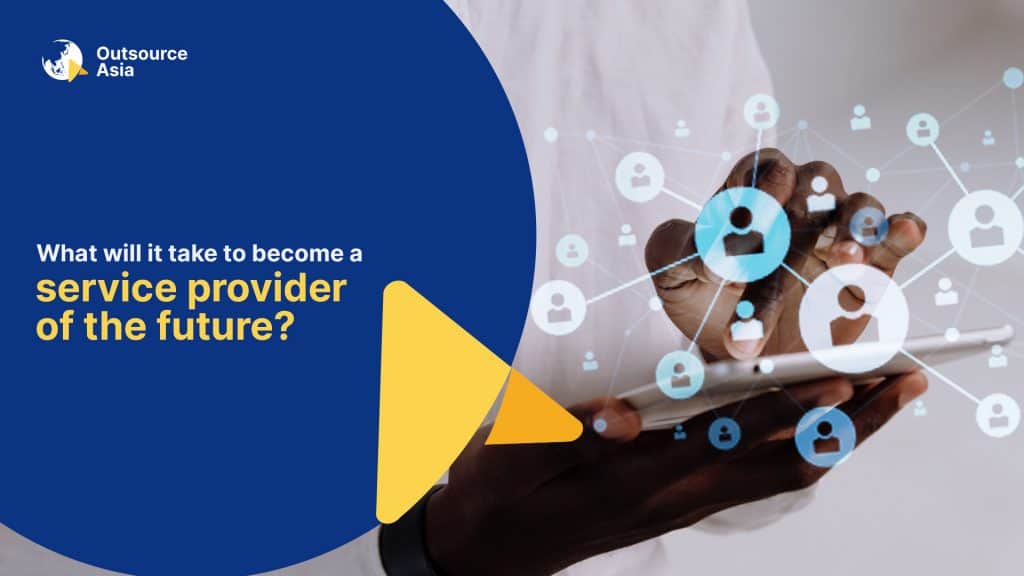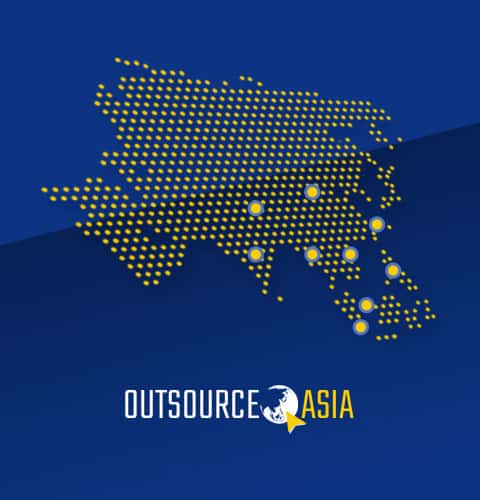
What will it take to become a service provider of the future?
Declare a strong sense of corporate purpose
Future ready service providers know that a strongly held sense of purpose is not just a fancy must-have – it’s also a differentiating factor and is a company’s unique affirmation of its identity.
A McKinsey report on 82% of purpose-driven organizations said that this clarifies ‘the why of work’. “They will clearly articulate what they stand for, why they exist, and will use purpose as the glue to connect employees and other stakeholders in ways that inform their business choices. To take a stance on purpose means to attract people to join an organization, to remain there, and to thrive. It’s about making it real for people – helping them identify with and feel connected to their company’s purpose”, it said.
Employees who say they are “living their purpose” at work, according to McKinsey, have engagement levels four times higher than their peers. It helps them inspire commitment, navigate uncertainty, and reveal untapped market potential just because they are centered at the heart of work.
Sharpen your value agenda
To be a future ready service provider means creating a value agenda that is precise, articulate, and tangible. According to McKinsey, there should be detailed mapping of key capabilities, product vision, business units, and other organizational elements. This is what sets them apart from those who don’t have a clear vision of how they create value for their employees, customers, and all other stakeholders.
“The key is to use the value agenda to focus the organization’s efforts and instill a sense of what really matters in every employee. When organizations can leverage this clarity – knowing exactly what differentiates them from everyone else – the results are powerful and hard to replicate,” the McKinsey report explained.
The power of a clear value agenda helps future ready service providers to achieve strategic priorities, to reallocate workforce seamlessly, and to efficiently shift resources as needed. Having discernment how and when to execute this activity is both ‘an economic engine and long-term competitive strength’ – increasing the chance to outperform peers and to be propelled for future success.
Demonstrate a robust performance culture
A service provider of the future not only knows its what (value agenda) and why (purpose), it distinguishes itself by its how (culture). Culture is the unique set of behaviors, experiences, rituals, and symbols that explains the way things are within the organization. According to McKinsey, culture “forms the backbone of organizational health and fuels sustained outperformance over time”. Service providers with a robust performance culture are those who reach faster, better decisions and achieve up to three times higher total returns to shareholders than companies without them.
“Future ready service providers consistently carry out the behaviors the company aspires to, work practices that stand out and feel fresh to outsiders, and innovative approaches to important moments,” explained McKinsey. “These don’t exist in slogans painted on the walls or in catchy email signature lines. It should ultimately be unique to each organization – because that is the only way to attract the right talent that will thrive in their culture, unlock their value agenda, and “turbocharge” performance,” McKinsey added.
Adopt the simplest but most effective business structure
Traditional service providers are quickly swept into the fast-evolving, ever-changing changes in their organizational structures as a way to stay relevant and remain competitive in a highly complex and competitive industry.
This is a losing bet. Future ready service providers, by contrast, utilize a fitter, flatter, and faster business structure to acquire speed and stability while unlocking value. “It’s not about eradicating hierarchy but implementing models that are designed, nurtured, and grown around people and activities,” explained McKinsey. “Service providers who want to future proof their businesses don’t focus on boxes and lines; instead, they have established networks of teams that are empowered to operate outside current structures, take over some critical operations, and deal with rapidly evolving situations.
Flexibility is as important as constant communication as it allows teams to learn lessons, make and correct mistakes, and try new approaches. Service providers of the future don’t bet on organizational complexity to solve market complexity – they rethink structures that will enable them to reinforce business objectives with clear, strong performance management and other mechanisms.
Turbocharge decision making
To prepare for the future, service providers must learn to consistently make fast, high-quality decisions. However, quality and speed are crucial to ensure it will have significant impact to achieving both business goals and bottom line.
“It requires a system that properly allocates decisions to the right executives, teams, individuals, or even algorithms. Top of mind for everyone should be who is working on what. Through managing the backlog of resources from the top of the house, organizations will speed up and increase the quality of decisions,” McKinsey revealed. Future ready service providers know the significance of having the correct number of decision makers, stakeholders, and critical voices in a decision. Each participant should be firmly involved so there’s no room for spectators. Rather than remove diverse perspectives or limit the number of contributors, it’s all about ensuring that there is a strong reason for everyone to be present during the decision-making process.
Create an attractive habitat for top talent
The changing world of work brought by the COVID-19 pandemic has made global service providers zero in on three core questions: What talent do we need? Where can we find it? How can we ensure they help us deliver on our value agenda?
Future ready organizations abide by a bedrock principle: Top talent in the new normal is scarcer than capital. Service providers who want to stay relevant and remain competitive in the future world of work must ensure that their organization is attractive enough to entice top talents to get involved with and stay involved for a long time.
These are some of the numbers revealed in the McKinsey survey: 39% of job applicants turn down an offer because of the firm’s perceived lack of inclusive employee experience; 36% of employees stay and thrive in organizations that celebrate racial/ethnic diversity; 25% of companies have above-average profitability due to their gender diversity prerogative.
“Service providers of the future see that talent ecosystems often allow for the best management and allocation of top talent. They locate and commend ‘stars’ in every position and at every level – and provide them access to greater opportunities for career advancement. It is important to harness a vibrant ecosystem of partners outside the company’s traditional boundaries, build data-rich technology platforms that support growth and innovation, and accelerate learning to fuel the talent engine they’ll need to succeed.”
Build data-rich tech platforms
Service providers of the future take data seriously. To make the most of data, there should be compelling approaches to data governance – tapping into the advantages of scalable cloud-based technology while making investments on variable-cost technology. Doing so will help organizations develop new products, services, and even businesses that will meet the needs and expectations of customers.
Harness the power of Internet of Things (IoT), Artificial Intelligence (AI), and Machine Learning (ML) to ensure cloud compliance, strengthen cybersecurity measures, and continuously innovate in a digital-first economy.
Future ready service providers are driven by intelligent operations, enabled with zero-touch interoperability, and operating on a virtualized infrastructure equipped with modern software architecture.


